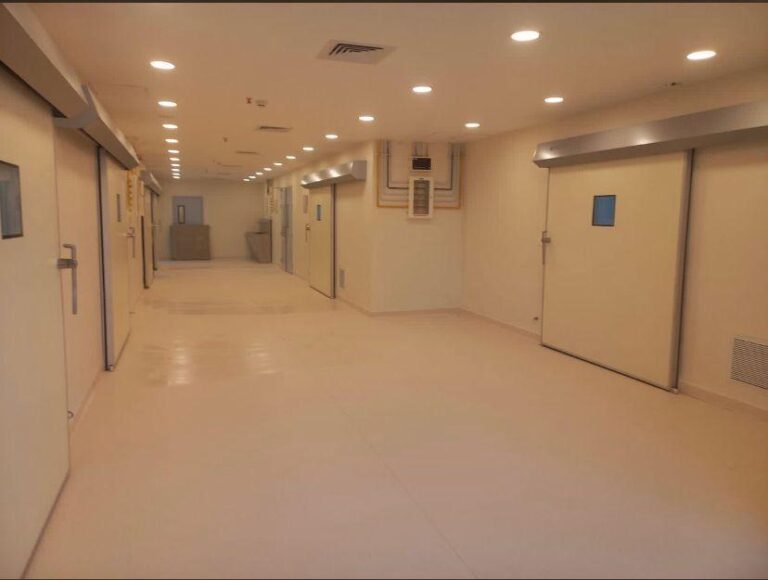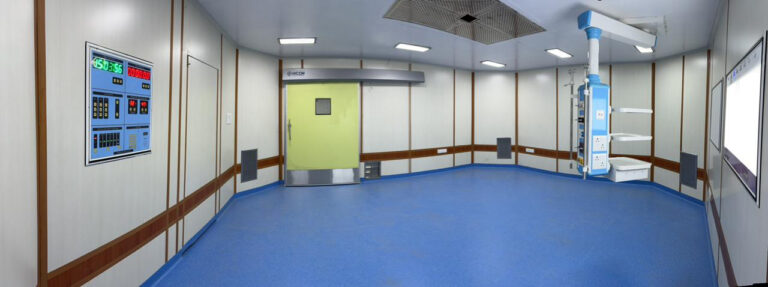In today’s world, where radiation exposure is a growing concern in various industries, ensuring the safety and health of employees and visitors is paramount. Anti-radiation door play a crucial role in shielding areas from harmful radiation, particularly in medical facilities, research laboratories, and nuclear power plants. Selecting the right anti-radiation door for your facility can be a daunting task, given the myriad of options available. This guide will help you navigate through the key factors to consider when choosing the best anti-radiation door for your specific needs.
1. Understand Your Radiation Protection Needs
The first step in selecting an anti-radiation door is to assess the type and level of radiation present in your facility. Different environments have varying radiation exposure levels, including:
X-rays: Common in medical and dental facilities.
- Gamma radiation: Often found in nuclear power plants and radiotherapy departments.
- Beta radiation: Typically encountered in laboratories and certain industrial applications.
Once you determine the type of radiation you need protection from, you can identify the appropriate door specifications to ensure adequate shielding.
2. Choose the Right Material
Anti-radiation doors are constructed from various materials, each offering different levels of radiation shielding. The most common materials include:
- Lead-lined doors: Highly effective for X-ray and gamma radiation, lead-lined doors provide excellent protection but can be heavy and require proper installation.
- Concrete or steel doors: These doors offer good radiation shielding for beta and gamma radiation and are often used in industrial settings.
- Composite materials: Some modern doors use advanced composite materials that provide effective shielding while being lighter and more aesthetically pleasing.
Consider the radiation type and the door’s location when selecting the material to ensure optimal protection.
3. Assess Door Thickness
The thickness of the door plays a significant role in its ability to block radiation. The thicker the door, the more effective it will be in preventing radiation penetration. The required thickness depends on:
- Radiation type: For example, lead doors may only need a few millimeters of thickness for X-ray protection, while gamma radiation may require thicker doors.
- Regulatory standards: Check local regulations and guidelines for specific thickness requirements for anti-radiation doors in your industry.
Consult with radiation safety experts to determine the appropriate thickness for your specific needs.
4. Evaluate Door Design and Functionality
The design and functionality of the anti-radiation door are also crucial factors to consider. Some key aspects to evaluate include:
- Hinges and seals: Ensure that the door has high-quality hinges and seals to prevent any gaps that could allow radiation to escape.
- Automatic vs. manual operation: Depending on your facility’s needs, you may opt for automatic doors that provide hands-free access or traditional manual doors.
- Emergency access: Consider how the door will operate in case of emergencies and ensure that it meets safety standards.
A well-designed door will not only provide radiation protection but also ensure ease of use and safety for all personnel.
5. Check Compliance with Regulatory Standards
When selecting an anti-radiation door, it is essential to ensure that it complies with local, national, and international radiation safety standards. Regulatory bodies, such as the International Atomic Energy Agency (IAEA) and the Environmental Protection Agency (EPA), provide guidelines on radiation protection in various industries.
Make sure that the door you choose meets these standards to ensure the safety of your facility and its occupants. Request certification and documentation from the manufacturer to verify compliance.
6. Consider Aesthetics and Integration
While functionality and safety are paramount, aesthetics also play a role in your selection process, especially in public areas or facilities with high foot traffic. Look for anti-radiation doors that can be customized to match your facility’s design and color scheme. This can enhance the overall appearance of your facility while still maintaining safety.
Moreover, consider how the door will integrate with existing security and access control systems to ensure seamless operation and enhance overall facility management.
7. Consult with Experts
Navigating the complexities of selecting the right anti-radiation door can be challenging. It’s advisable to consult with radiation safety experts or specialists from reputable manufacturers like HIKOM International LLP. These experts can provide valuable insights into the best practices for radiation protection, helping you make informed decisions based on your facility’s specific needs.
8. Review Manufacturer Reputation and Support
Finally, consider the reputation of the manufacturer when selecting an anti-radiation door. Look for companies with a proven track record of producing high-quality products that meet industry standards. Additionally, check for customer reviews and testimonials to gauge the experiences of other facilities with the manufacturer’s products.
A reputable manufacturer should also provide excellent customer support, including installation assistance, maintenance services, and warranty options. This support can be invaluable in ensuring the long-term effectiveness of your anti-radiation door.
Conclusion
Selecting the best anti-radiation door for your facility is a critical decision that requires careful consideration of various factors, including radiation type, material, thickness, design, and compliance with regulations. By understanding your specific needs and consulting with experts, you can make an informed choice that enhances safety and protection against radiation exposure. At HIKOM International LLP, we are committed to providing high-quality anti-radiation doors that meet the highest standards of safety and performance. Reach out to us to discuss your needs and discover the best solutions for your facility.


